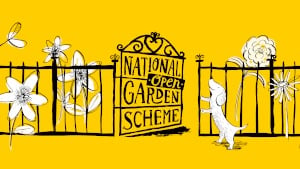About Legsheath Farm
Legsheath has had past associations with the Master of the Ashdown Forest and Sheriff of Sussex and to this extent there has always been a garden. However, the garden as we see it to-day was largely laid out in 1911 and 1935. It is set high overlooking Weirwood Reservoir with views in all directions. Longitude 0 or Greenwich Meridian runs North South through the garden. A spring rises in the upper parts of the garden and transforms itself into a stream with a series of falls which feed three large ponds. The water garden at the lower level has large plantings of candelabra primulas, meconopsis and lobelia. Wild orchids have also naturalised in the wetter areas. The woodland paths leading to the largest pond have interesting rhododendrons, magnolias and acers. There is also a Sussex folly and a hornbeam house around the bottom pond.Returning to the upper levels, there is a large bank of azaleas bordering a formal pond with abutilons, eucryphia, kalmias and stewartia planted in the other borders. The formal borders between the ice house and the tennis court has one of the largest davidias in Sussex. There are also various species of cornus, acers, crinodendron and embothrium coccineum in these borders. Daphnes for all seasons have been introduced. Above these and surrounding the well are a number of rare trees including pterostyrax hispida, wollemi pine, tulip tree (aureomarginata) and a national champion Korean oak. The herbaceous borders below the summer house contain interesting collections of perennial plants. Below these are a number of bulb borders which are largely planted with tulips and dahlias in late summer.

.jpg)
.jpg)
.jpg)
.jpg)
.jpg)
.jpg)
.jpg)
.jpg)
.jpg)
.jpg)
.jpg)
.jpg)
.jpg)
.jpg)
.jpg)
.jpg)
.jpg)
.jpg)


.jpg)
.jpg)
.jpg)
.jpg)
.jpg)
.jpg)

.jpg)